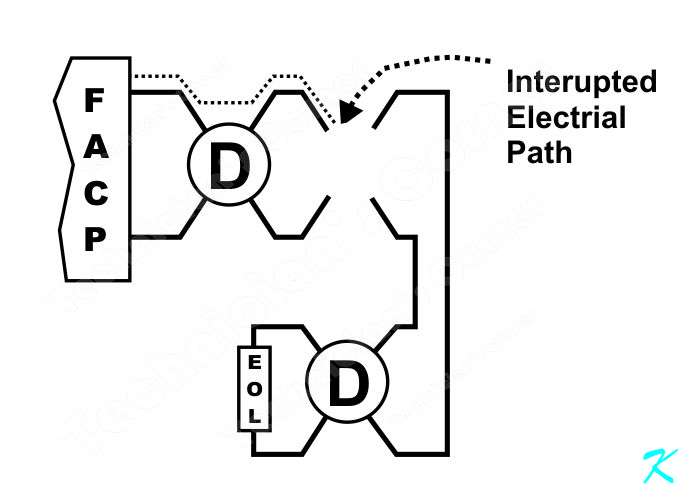1. Is addressable (connected in Class A) NAC permissible in NFPA?
Yes, the NFPA (National Fire Protection Association) does allow for addressable horns, strobes, and speakers, but there's more to the question.
Notification Appliance Circuits (NAC) whether they're Class A or Class B have to be consistent. All of the horns, strobes, and any speakers on the circuit have to be of the same manufacturer, and work with each other in the circuit; they have to be compatible with each other. If they are of different types, some of the horns or strobes won't sound off at the proper rate, and possibly won't work at all. Some of the speakers will be either too loud or too quiet.
When addressable horns, strobes, and speakers are on the same circuit as conventional horns, strobes, and speakers, some won't work at all, and some will stay on all the time. In other words, mixing conventional devices and addressable devices won't work at all.
All of the horns, strobes, and speakers have to be compatible with (work with) the fire alarm system manufacturer, or the circuit and devices won't work right.
Call the technical support for the manufacturer of the fire alarm system to find out what devices are going to work with their system (be compatible with their system).
2. What is allowable time in NFPA to get the trouble signal if you remove a NAC device?
As such, the NFPA does not allow a fire alarm system to have trouble. It is their opinion that a fire alarm system should always work. If there's trouble with the system, the trouble means that parts of the system aren't working. Possibly the fire alarm system won't detect some or all fires, or the fire alarm system won't warn anyone about the fire. A "Trouble Signal" doesn't show what's wrong; a "Trouble Signal" just shows that something's wrong.
To work on a fire alarm system, though, there will be trouble; that's what "working on the system" does. When you are on site and working on the system, the assumption is that you, personally, are also watching for fires. You are required, personally, to have awareness of the possibility of fire, and should have a plan in the back of your mind of what to do in case of fire.
If you remove a horn or strobe from the circuit, be aware that some or all of the horns or strobes on the circuit won's work (that's what trouble with the NAC circuit means). Make sure that occupants of the building can be warned of a fire before you leave.
The local fire marshal might have further ideas about the trouble signal.
Douglas Krantz
